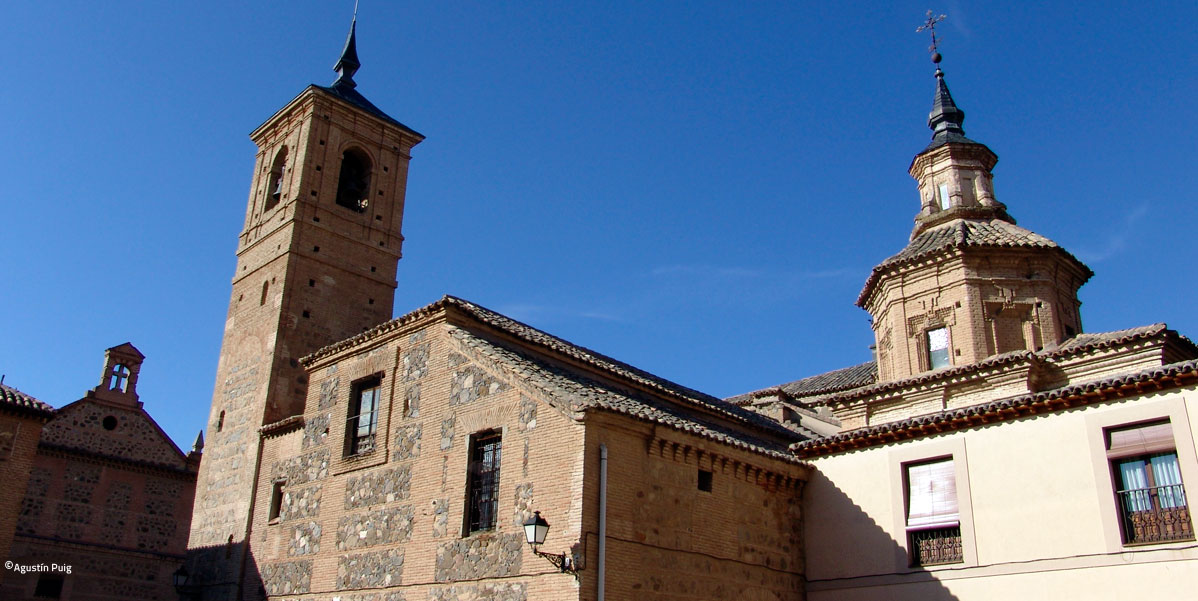It could be Toledo's Iglesia de San Andrés. Here's a large modern photo. The extra intricacies could be from a 1975 restoration, which revealed some details in the facade.

Things it matches:
- He did visit Toledo
- The shapes of the two distinctive towers and their position relative to each other are very similar. The octagonal (?) tower has windows in the photo but is plain in the painting, but this could be from the 1975 restoration
- The two unusual doorway-shapes not centred in the rectangular tower - one high, on the right, just below horizontal lines where the colour of the stone changes, the other lower, inside a feint arch-shaped recess, on the left
- The rectangular tower has a yellowish hue above and around the horizontal lines, and a pinkish hue below them
- The sloping roof between the two towers. Some other photos show the roof in this photo has a point similar to the backmost roof in the painting - details like windows are different, but this might have changed in the time since it was painted
There are many differences in the surrounding buildings, like the white building in front of the other tower, but these may be from recent changes.
This Flickr album has a few shots across the town with this building visible. None are from the right angle to match the painting, but it does appear to sit atop and amid the other buildings in a similar fashion to how it does in the painting, despite the obvious modern development.
If it's not this building (the painting does look like it might be somewhere smaller than this) it's probably similar enough that the similarity may have been commented on.


